Disclosure: This article contains affiliate links. We may earn a commission from purchases at no extra cost to you, which helps our travel content.
The first time I tasted a Maine lobster, I was kneeling in the sand at sunset, watching an elder from a neighboring Wabanaki nation demonstrate the traditional way to cook shellfish. That moment—where ancient knowledge met the Atlantic's bounty—forever changed my relationship with seafood. Now, years later, as I wander through Bar Harbor's misty mornings with the scent of saltwater clinging to everything, I'm reminded that some places hold a sacred connection between the land, sea, and our most primal need to gather and feast. Bar Harbor isn't just another pretty coastal town; it's a living museum of maritime culture where generations of fishing families have harvested the cold, nutrient-rich waters of the Gulf of Maine. Whether you're a seafood aficionado or simply someone who appreciates the poetry of a perfect lobster roll eaten while watching fishing boats sway in the harbor, this guide will navigate you through the best maritime meals this corner of New England has to offer.
The Ritual of the Maine Lobster Experience
There's something almost ceremonial about eating lobster in Maine—a rhythm and process that feels both ancient and immediate. My EMT training taught me that rituals matter; they ground us in the present moment and connect us to something larger than ourselves. In Bar Harbor, the lobster ritual begins with selecting your catch from tanks where they scuttle about, antennae waving like divining rods.
At Beal's Lobster Pier in Southwest Harbor (just a short drive from Bar Harbor), you'll find yourself seated at wooden picnic tables overlooking the working harbor where the very lobsters you're eating were likely unloaded hours earlier. The staff will hand you the tools of the trade—crackers, picks, and those impossibly small forks—along with a plastic bib that you'll absolutely need. There's no pretension here, just the honest work of extracting sweet meat from unforgiving shells.
For those who prefer guidance through this delicious challenge, Bar Harbor Lobster Company offers 'Lobster 101' demonstrations during peak summer months. I watched a family from Arizona transform from hesitant observers to confident crackers in less than twenty minutes, their fingers working with the precision my paramedic colleagues would appreciate.
If you're planning multiple lobster feasts (and trust me, you will be), consider bringing along a proper lobster tool kit. I keep one in my travel kit for spontaneous seafood adventures, and it's transformed many awkward struggles into elegant dining experiences.
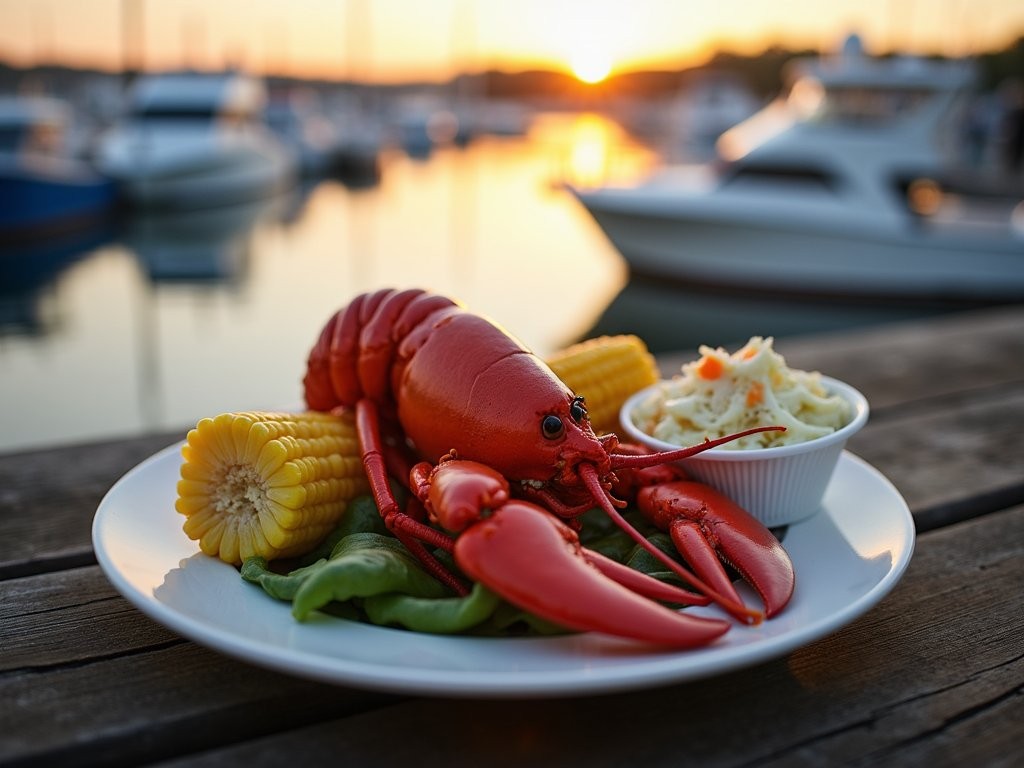
💡 Pro Tips
- Ask for soft-shell lobsters ('shedders') if available—they're easier to crack open and often sweeter
- The green substance (tomalley) is the liver and considered a delicacy by many locals
- For the fullest flavor experience, try dipping the meat in both drawn butter and the natural juices that pool in the shell
Beyond the Lobster Roll: Hidden Seafood Gems
While the lobster roll deservedly gets the spotlight (more on those treasures later), Bar Harbor's seafood scene offers so much more for the curious palate. As someone who's spent countless hours seeking out emergency room-adjacent food trucks across North America, I've developed a sixth sense for finding exceptional food in unexpected places.
Thurston's Lobster Pound in nearby Bernard feels like stepping into a maritime time capsule. Perched on stilts over a working harbor, this no-frills spot serves some of the area's best seafood stew—a hearty concoction that reminds me of the healing broths my Mi'kmaq grandmother would prepare. The stew combines haddock, scallops, and chunks of lobster in a light cream base that doesn't overwhelm the delicate flavors of the seafood.
For something truly special, seek out Havana Restaurant on Main Street. Their lobster paella—a Maine-meets-Cuba fusion—incorporates saffron rice, local mussels, and generous portions of lobster meat. The sacred geometry of this dish—the perfect circular pan, the radiating pattern of shellfish—creates a visual feast that matches its flavors.
If you're looking to explore beyond restaurant walls, consider joining one of Coastal Kayaking Tours' paddle-to-dinner excursions. You'll work up an appetite with a guided evening paddle through Frenchman Bay before landing at a secluded spot for a fresh seafood dinner prepared on the beach. I've found that food tastes profoundly different when you've physically journeyed to reach it—something about the earned hunger and connection to place enhances every bite.
For picnics and casual meals, Downeast Deli offers incredible seafood sandwiches beyond the standard lobster roll. Their smoked bluefish spread on locally baked bread, topped with microgreens and pickled onions, makes for a perfect lunch while exploring Acadia National Park. Pack it in an insulated lunch cooler to keep it fresh while hiking to the perfect picnic spot with a view.
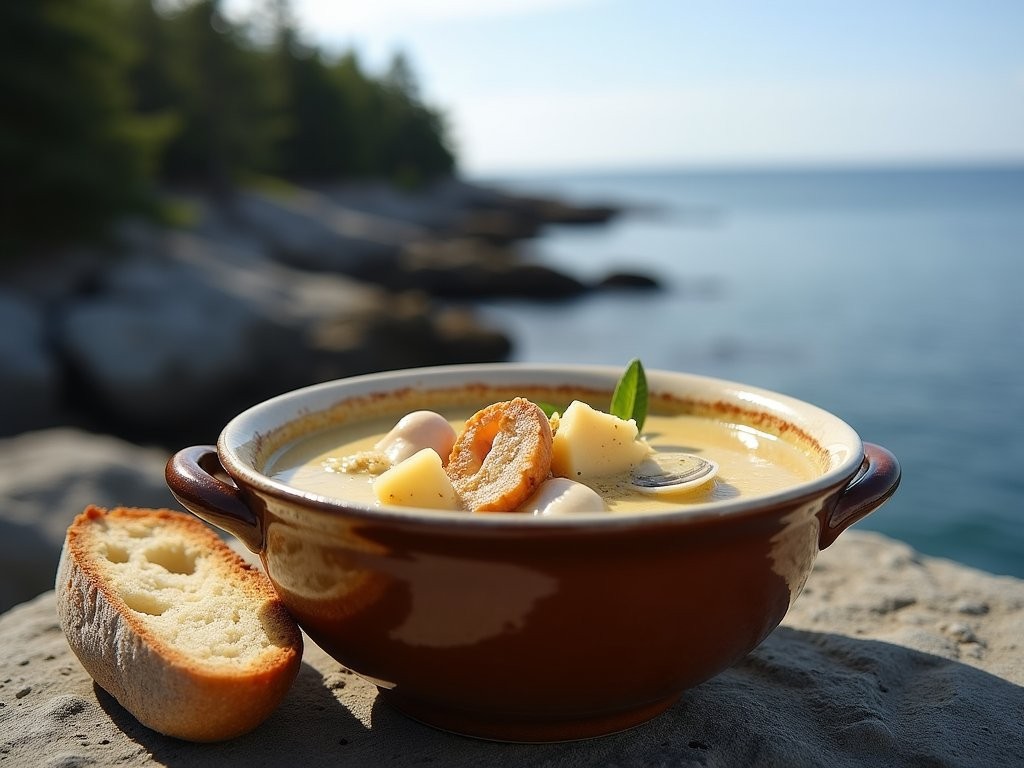
💡 Pro Tips
- Ask locals about which fishmongers sell directly to the public—you might score freshly caught scallops at half the restaurant price
- The best seafood chowders typically have a clear or lightly creamy base, not thick and gluey
- Look for restaurants displaying the Gulf of Maine Research Institute's 'Out of the Blue' sustainability certification
The Great Lobster Roll Pilgrimage
Let's address what many come to Bar Harbor seeking: the perfect lobster roll. As someone who's responded to enough medical calls to know that life is short, I believe investing time in finding exceptional food experiences is never wasted. A proper Maine lobster roll is deceptively simple—fresh-picked lobster meat, a whisper of mayonnaise (or warm butter for Connecticut-style), and a split-top bun grilled to golden perfection.
Travelin Lobster on Route 3 might look unassuming from the road, but this family-run operation serves what many locals (including three different ER nurses I befriended during my stay) consider the area's best lobster roll. The meat is hand-picked daily, dressed minimally, and served in generous portions. The family has been fishing these waters for generations, and that connection to place translates directly to the plate.
For a more upscale experience, Salt & Steel downtown offers a brown butter lobster roll that's been elevated to an art form. The chef briefly poaches the lobster meat in herb-infused butter before serving, creating a rich flavor profile that honors rather than masks the sweetness of the meat.
If you're planning to hit multiple lobster spots (which I highly recommend), consider creating your own tasting tour. I used my travel journal to create a scoring system based on meat freshness, bread quality, and overall composition. This might sound clinical, but it became a delightful project that led to passionate debates with fellow travelers I met along the way.
The unexpected winner in my personal lobster roll rankings? Side Street Cafe, where they serve a variation with just the faintest hint of lemon zest and tarragon that somehow magnifies the lobster's natural sweetness. The owner told me this recipe came from her grandmother, who believed that food should be prepared with intention and respect for the ingredients—a philosophy that resonates deeply with indigenous food traditions I grew up with.
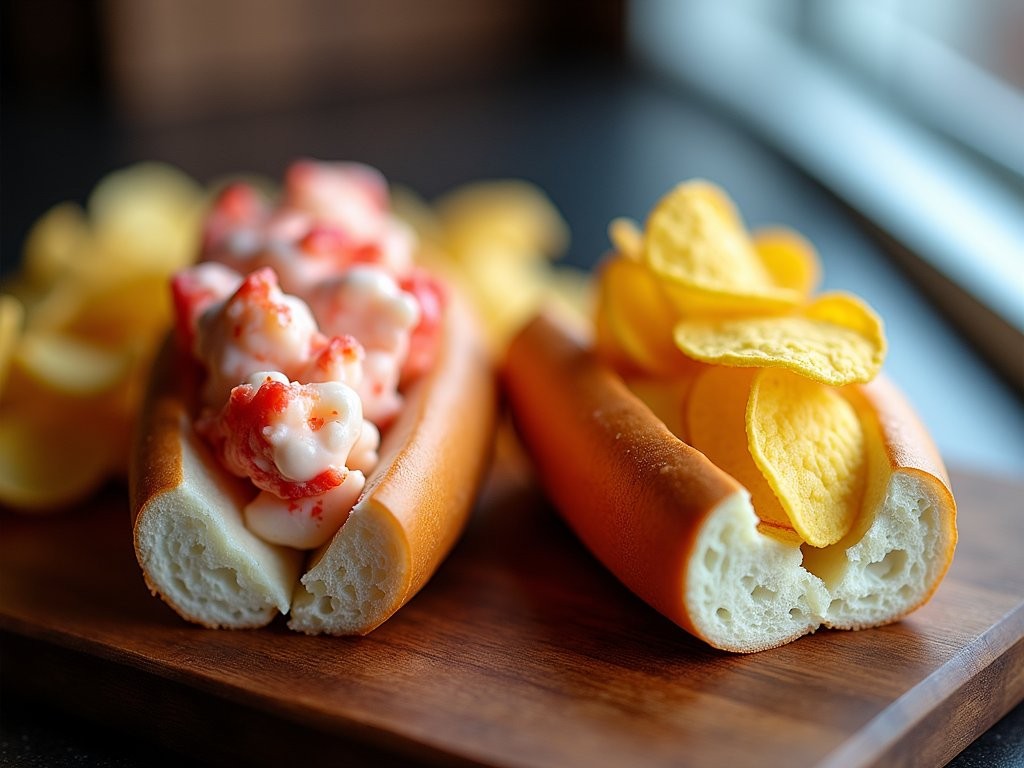
💡 Pro Tips
- True Maine-style rolls are served cold with mayonnaise; Connecticut-style are served warm with butter—try both to determine your preference
- The best rolls have a high ratio of claw and knuckle meat, which many connoisseurs consider sweeter than tail meat
- Ask when the lobster was picked—anything prepared that morning is ideal
Healing Waters: The Oyster Experience
There's something deeply meditative about watching an experienced shucker open oysters—the practiced movements, the intimate knowledge of each shell's geography, the revelation of the glistening meat within. In my EMT work, I've learned that precision movements under pressure reveal mastery, and nowhere is this more evident than at Blaze restaurant's oyster bar.
Here, I watched a third-generation oyster farmer named Jim demonstrate his craft while explaining how each cove and inlet around Mount Desert Island produces oysters with distinct flavor profiles. "The oyster is a perfect expression of place," he told me, echoing wisdom that indigenous coastal peoples have understood for millennia. "It filters the water, takes on the mineral content of its surroundings, and becomes a living record of that specific patch of ocean."
For those new to oysters, Paddy's Pub offers an excellent "Oyster Flight" featuring varieties from different Maine locations, arranged from mildest to most briny, with thoughtful accompaniments beyond the standard cocktail sauce and mignonette. Their knowledgeable staff can guide you through the experience, noting the subtle cucumber notes of Pemaquids or the sweet finish of Johns River oysters.
If you're planning to visit multiple oyster spots (and I hope you do), consider bringing a small insulated water bottle filled with cold water. Between tastings, a sip of clean, cold water helps reset your palate—a trick I learned from a sommelier in Halifax who insisted it works better than fancy crackers.
For a truly immersive experience, Acadia Aquafarms offers tours where you can learn about sustainable oyster farming practices while sampling the freshest possible product. Standing waist-deep in the cold Atlantic waters, understanding the delicate balance required to raise these filter feeders, connects you to a form of agriculture that actually improves rather than depletes its environment—a powerful reminder of how our food choices impact the world around us.
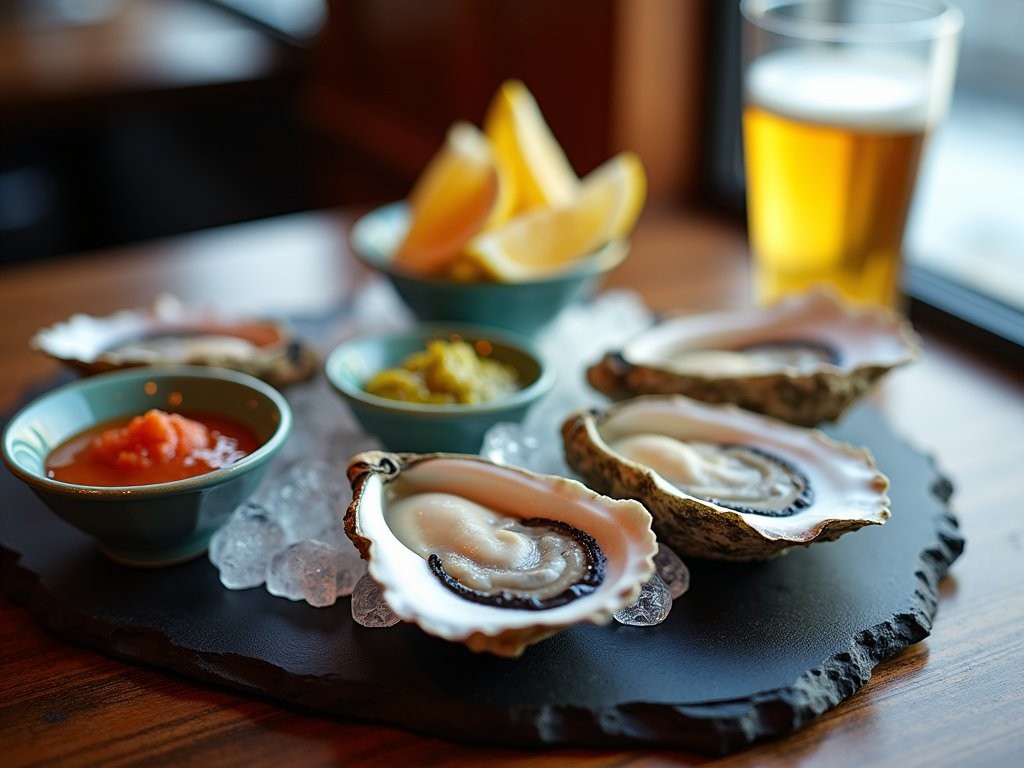
💡 Pro Tips
- When tasting oysters, start with the smallest or mildest varieties and work your way up to the more intense flavors
- True oyster aficionados avoid cocktail sauce, which can overwhelm the subtle flavors of the oyster
- Look for oysters labeled with their harvest location—each cove produces distinct flavor profiles
Sustainable Seafood: Connecting with Local Fishing Traditions
My Mi'kmaq ancestors understood something fundamental about harvesting from the sea—that our relationship with these resources must be one of reciprocity and respect. In Bar Harbor, I found this wisdom alive in the practices of many local fishing operations and restaurants committed to sustainable seafood.
Maine Ocean Farm offers tours of their aquaculture operation where they're pioneering sustainable kelp and shellfish farming. The owner, Sarah, explained how their integrated multi-trophic aquaculture system mimics natural ecosystems—the kelp absorbs excess nutrients while providing habitat for the shellfish. The geometric precision of their underwater growing systems reflects the sacred patterns found throughout nature, a reminder that human ingenuity works best when aligned with natural systems.
For those interested in the fishing heritage of the region, the Bar Harbor Historical Society hosts weekly talks by retired lobstermen who share stories of how fishing practices have evolved over generations. I was particularly moved by 80-year-old Captain Mike's description of how his grandfather taught him to return breeding female lobsters to the water—a practice that became Maine law only decades later but had been traditional knowledge for centuries.
At Fogtown Brewing Company, they've partnered with the Gulf of Maine Research Institute to create a series of beers that highlight sustainable seafood practices. Their "Keeper" IPA comes with information about responsible harvesting and even connects consumers directly to local fishing cooperatives through QR codes on the cans.
For home cooks staying in accommodations with kitchens, Parson's Lobster Shop offers sustainably harvested seafood along with guidance on proper preparation. I spent a memorable evening cooking scallops I'd purchased there, using techniques the fishmonger had demonstrated. Having the right tools makes all the difference—I always travel with my chef's knife wrapped carefully in my checked luggage, as good knife skills are essential for both emergency medicine and respectful food preparation.
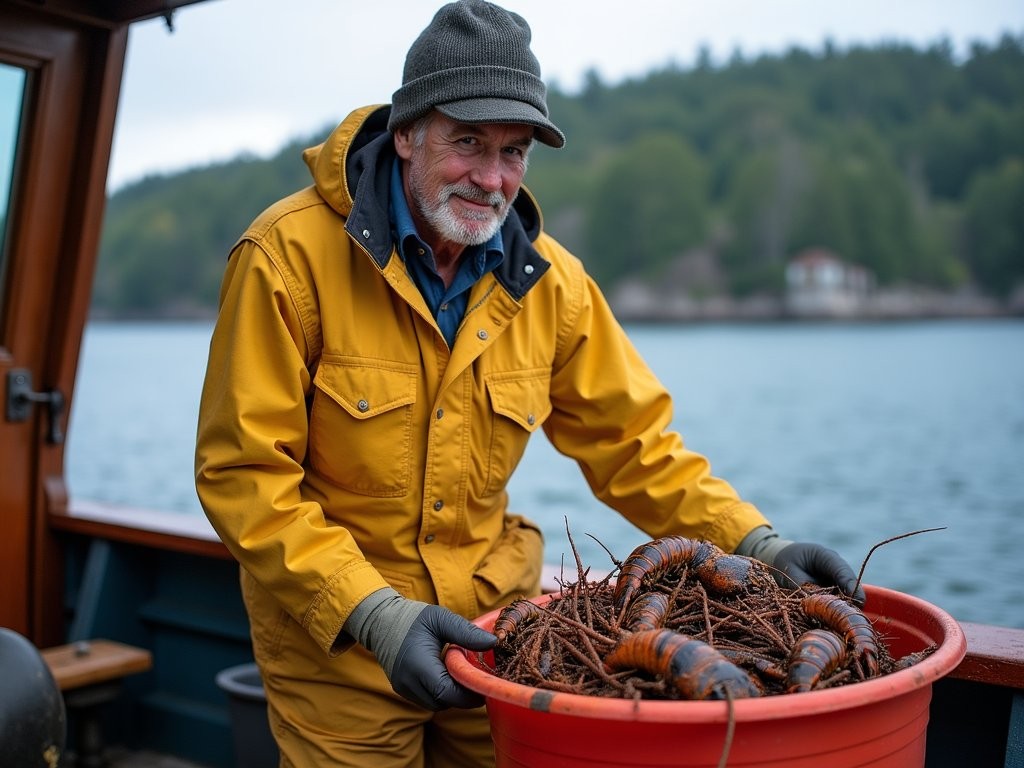
💡 Pro Tips
- Look for the Gulf of Maine Research Institute's 'Responsibly Harvested' label when purchasing seafood
- Ask restaurants about their sourcing—most sustainable operations are proud to share their practices
- Consider alternatives to popular species—Atlantic pollock and redfish are delicious, plentiful, and under less harvesting pressure than cod
Final Thoughts
As I stand on the shore watching the fog roll in across Frenchman Bay, I'm reminded that places like Bar Harbor offer more than just exceptional seafood—they provide a connection to ancient rhythms of sustenance that our modern world often obscures. The taste of perfectly prepared lobster becomes a gateway to understanding this place: its cold, nutrient-rich waters, the generations of fishing families who've worked these shores, and the delicate balance between harvesting and preserving ocean resources. Whether you're cracking open your first lobster, discovering the mineral complexity of local oysters, or learning about sustainable aquaculture, Bar Harbor invites you to slow down and savor not just the food but the stories and traditions behind it. As my Mi'kmaq elders would say, when we eat with awareness, we honor both the gift of the food and those whose hands brought it to us. May your journey through Bar Harbor's seafood landscape nourish both body and spirit.
✨ Key Takeaways
- For the most authentic experience, seek out family-run operations with direct connections to local fishing fleets
- Sustainable seafood choices support both environmental health and traditional fishing communities
- The best seafood experiences often come with stories—take time to talk with locals about their maritime heritage
📋 Practical Information
Best Time to Visit
June through September, with July and August offering warmest weather but largest crowds
Budget Estimate
$75-150 per day for food, with lobster dinners ranging $25-45
Recommended Duration
3-4 days minimum to sample diverse seafood options
Difficulty Level
Beginner

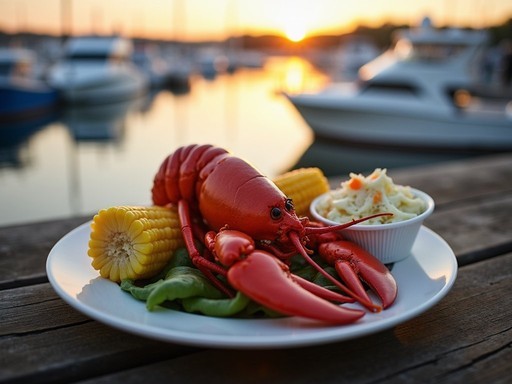
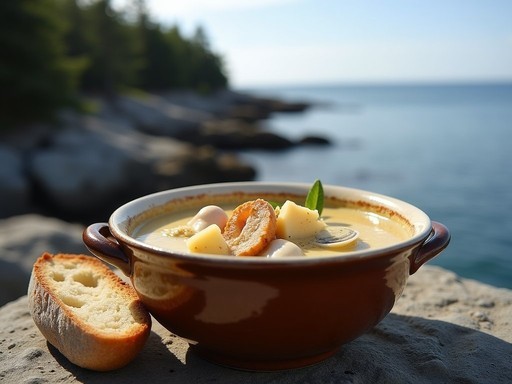
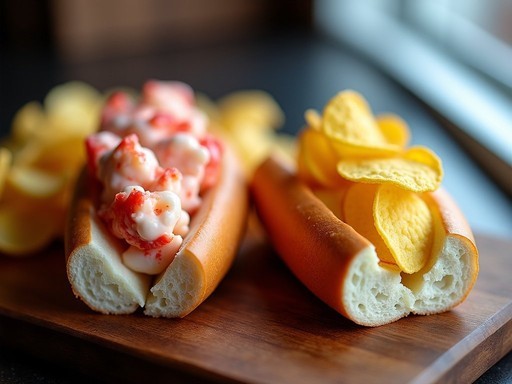

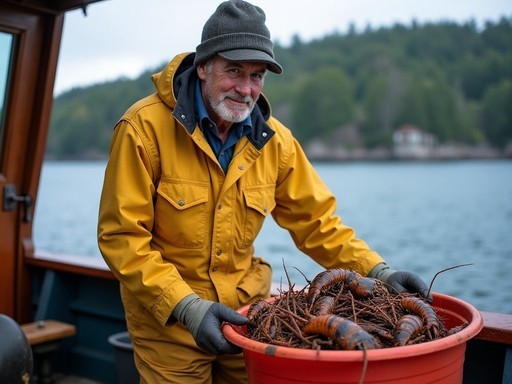


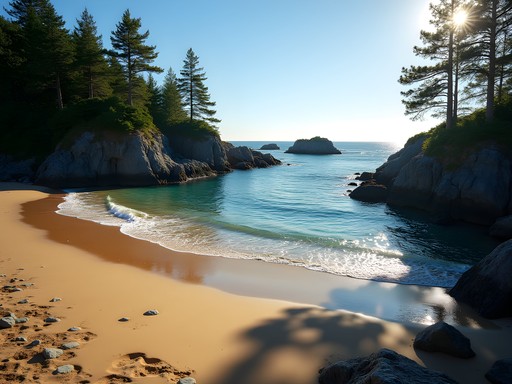


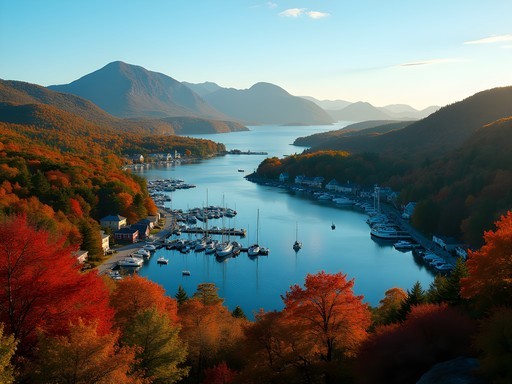




Comments
springwalker
Just got back from Bar Harbor last week and your guide was spot on! We tried three different lobster rolls from your list and Beal's was definitely our favorite. That view while eating cannot be beat. The tip about trying the lobster stew at Galyn's saved our rainy day - so rich and perfect with that stormy harbor view from their upstairs window. We also took your advice and picked up a seafood cookbook while we were there so we could try making our own seafood dishes at home. Haven't attempted lobster yet though - still intimidated by those claws!
sunnyguy2203
Was Beal's crowded? Trying to decide if I should make reservations somewhere or just play it by ear.
springwalker
It wasn't too bad in September! I think you'll be fine in October without reservations. We waited maybe 15 minutes max. Definitely worth it!
Marco Flores
Your post transported me back to my own Maine adventure last summer! I'll never forget sitting on those smooth rocks along the shore path, cracking open my first proper Maine lobster as the sun set over the islands. What struck me most about Bar Harbor was how the seafood connects you to the landscape - exactly as you described in your 'Healing Waters' section. I spent an afternoon with a local oyster farmer who showed me how the unique tidal patterns of Frenchman Bay create that distinctive brininess. For anyone visiting, I highly recommend taking one of the working lobster boat tours - you gain such appreciation for the work that goes into getting that lobster to your plate. Beautiful storytelling as always, Sage!
Sage Dixon
Thank you, Marco! I love that you mentioned the working lobster boat tours - I should have included that! There's something so special about understanding the connection between the sea, the people who harvest from it, and the food on our plates. Your oyster farmer experience sounds incredible too.
Claire Hawkins
This article brought back so many memories! Last summer, our family rented a cottage near Bar Harbor, and my 8-year-old daughter tried lobster for the first time. The look on her face was priceless! We actually attended one of those traditional lobster bakes mentioned in the article - complete with seaweed and hot stones. The experience was magical for the kids, learning about sustainable fishing from locals while enjoying the feast. One tip I'd add: if you're traveling with children, bring them to the touch tanks at the oceanarium before eating seafood. My kids were fascinated by seeing the creatures in their natural state, and it made them more adventurous eaters! We used our tide chart guide to time our beach visits for tide pooling too - found so many interesting creatures!
Megan Martin
Sage, your description of that sunset lobster experience with the Wabanaki elder gave me chills! I was in Bar Harbor last summer researching for my business travel series and had a similar revelation about how deeply food connects to place. The Trenton Bridge Lobster Pound you mentioned was incredible - that smoky wood fire cooking method makes all the difference. I'd also add Charlotte's Legendary Lobster Pound to your list for anyone willing to drive a bit further. Their lobsters are given cannabis before cooking (for humane reasons) and while I can't say if it affects the taste, the whole experience is uniquely Maine! Did you get to try any of the foraging tours that pair with local restaurants?
Sage Dixon
Thanks Megan! I did try Atlantic Climbing Co's forage and feast tour - amazing experience collecting sea vegetables along the shore then having them prepared at Salt & Steel. Definitely worth adding to your business travel recommendations!
luckynomad
Going to Bar Harbor in September - is that still a good time for lobster? And any recommendations for places that won't break the bank? Those prices in the tourist areas look scary!
Sage Dixon
September is actually perfect timing! The summer crowds thin out but the lobster is still excellent. For budget-friendly options, try the lobster pound mentioned in the article or grab a lobster roll from Side Street Cafe - huge portions and more reasonable prices than the waterfront spots. Also, many locals buy their lobster from Parsons Lobster and bring it back to cook at their rental. Enjoy your trip!
luckynomad
Thanks so much! Side Street Cafe is now on my list. Do you think I need to make reservations that time of year?
Sage Dixon
For dinner, yes - especially weekends. Lunch you can usually walk right in!
sunnyguy2203
Great post! Going to Bar Harbor next month - is October too late for the good lobster spots or will most places still be open?
Sage Dixon
October is actually perfect! Fewer tourists but most of the top spots stay open through Columbus Day weekend. After that it gets hit or miss, but places like Thurston's and Beal's are usually reliable into late fall.
sunnyguy2203
Thanks so much! That's exactly what I needed to know!
beachguy
Just got back from Bar Harbor last week and your post is spot on! We tried three different lobster rolls from your 'Great Lobster Roll Pilgrimage' section. The warm butter-drizzled one at Beal's was life-changing! Also discovered that little oyster bar you mentioned near the harbor - those Frenchman Bay oysters were the freshest I've ever had. One tip for others: go early on weekdays to avoid the cruise ship crowds. We used our tide chart guide to plan our meals around low tide when some places are less crowded.
photoway8330
Thanks for the tip about avoiding cruise ship days! How were the prices at Beal's compared to the other places?
beachguy
Beal's was actually mid-range! Not the cheapest, not the most expensive. But definitely the best value for the quality you get. Worth every penny!
photoway8330
That opening story about watching the Wabanaki elder cook shellfish on the beach sounds amazing! Did you get any photos of that traditional cooking method?
Sage Dixon
I actually did! I was so captivated by the experience that I almost forgot to document it. I have a few shots I'll add to the photo gallery soon. It was truly a special moment that changed how I think about seafood preparation.
photoway8330
Can't wait to see them! I'm heading to Bar Harbor next month and would love to experience something similar.
nomadbackpacker
Just got back from Bar Harbor last week and this post is spot on! We tried lobster rolls from three different places mentioned here. That tip about eating at the docks instead of the fancy restaurants saved us so much money and the seafood was actually fresher. My wife still talks about those oysters from the little shack near Frenchman Bay. The locals really do know best!
Claire Hawkins
Which dock spot was your favorite? Taking my parents there next month and my dad is a serious lobster enthusiast!
nomadbackpacker
Definitely try Beal's Lobster Pier! It's not exactly in Bar Harbor (about 15 min drive) but totally worth it. No frills, just perfect lobster and the views are incredible. Get there early though - it gets packed!
wildrider9065
That sunset photo with the lobster traps in the foreground is absolutely stunning! What camera do you use?
Venture X
Premium card with 2X miles, $300 travel credit, Priority Pass